“I reckon there are 5 seasons.
There’s an early spring, which I call Sprinter…a Sprummer which comes after that for 2 months…There’s a long summer…a short autumn, a short winter – both just two months long, and then you’re back at Sprinter.”
Tim Entwisie, Director, Royal Botanic Gardens, Melbourne, Australia.

Succulents and evergreen shrubs are mainstays year-round. Summer bloom 2015 from isoplexis, agapanthus, anigozanthos, verbascum, the annual Orlaya grandiflora.
Small garden, tough choices. Is the plan geared toward winter, spring, summer and/or fall? All of the above? Add a collecting habit into the mix, in a summer-dry climate that blurs traditional seasonal boundaries, and it gets even more complicated. I probably write more about my collector mania side, but believe it or not, there is a side that tries to stay mindful of the garden as a whole, with varying success year to year. And, locally, as front lawns are changed out from lawn to garden, there’s sure to be a lot more minds focused on similar design issues for small spaces.
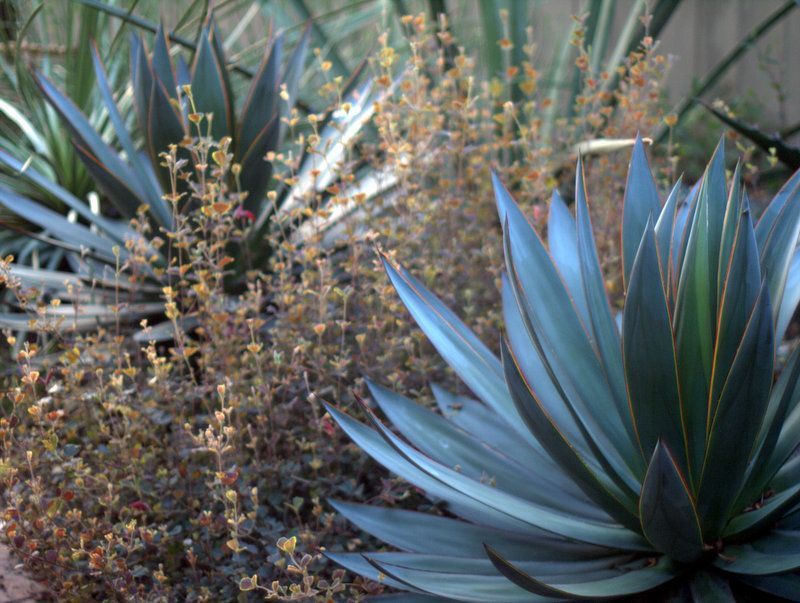
‘Blue Glow’ agaves and Brachysema praemorsum in the front garden. Not much happening for summer here.
My succulent-filled front garden gets minimal dry season irrigation, so most of the experimenting takes place in the back garden.
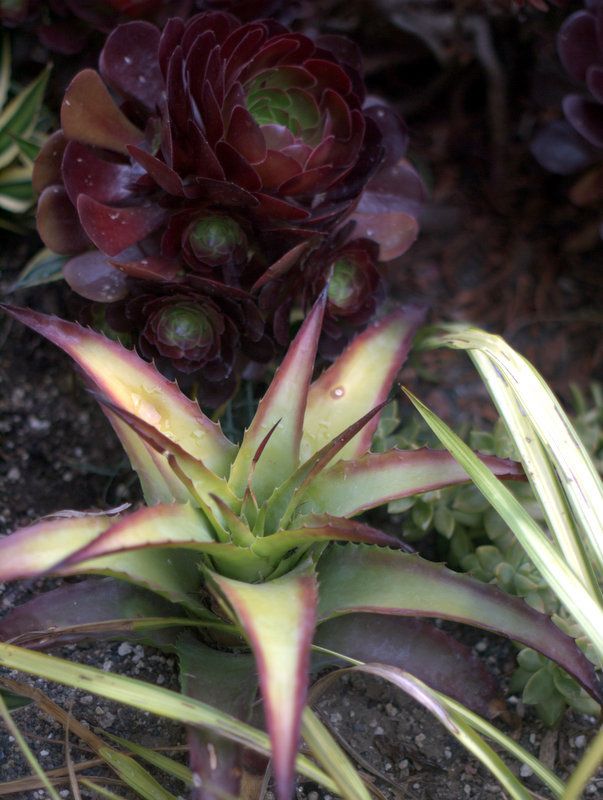
Courtesy of the collecting side of my brain, a NOID hechtia, a terrestrial bromeliad from Mexico
The back garden is smaller than a lot of living rooms and, to be honest, just can’t support all my ambitions for it. There have to be some compromises. The answer to where to put the planting emphasis, whether on the “Sprinter,” the “Sprummer,” (to use Mr. Entwisie’s terminology) or the long, dry summer, changes all the time. For me spring is simple (poppies) and by fall conditions are much too dry to expect anything grand happening in the garden. Besides, that’s when the grasses shine. In the past I gave more ground to summer, with a higher concentration of perennials and annuals, but that can be a more water-intensive approach, and it does takes ground from the winter garden.
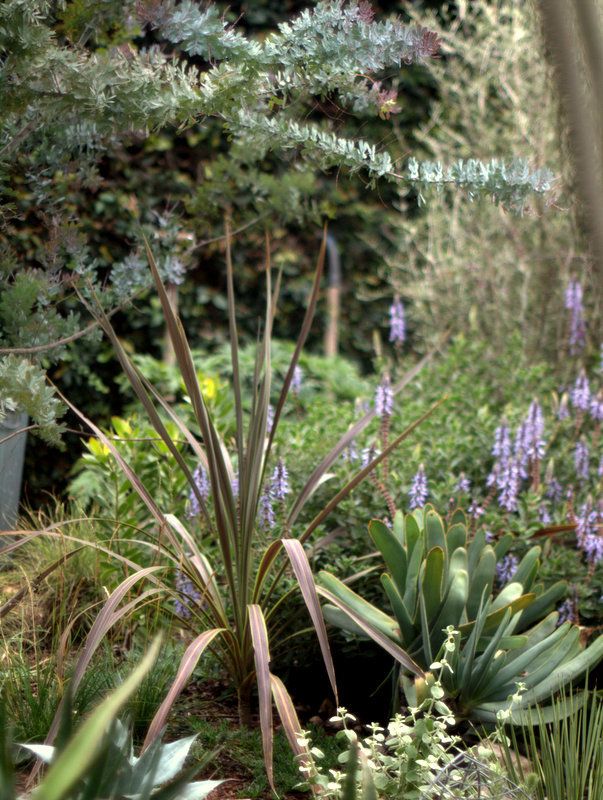
The newest planting in the back garden is this section under the Acacia baileyana ‘Purpurea,’ after the Arundo donax ‘Golden Chain’ was pulled out last fall. A Leucodendron ‘Safari Goldstrike’ is making good size behind the cordyline. There are lots of aloes here, grasses, and an Agave ovatifolia. Not much for summer unless the young asphodels take root and thrive.
Currently, the back garden this year is shrubbier, more solid, more evergreen, maybe even a bit more somber. This year summer gets maybe 40 percent of the planting emphasis breakdown. But a lot of new shrubs are still small and will take up considerably more room by 2016, so the focus and weight will have shifted again next year.
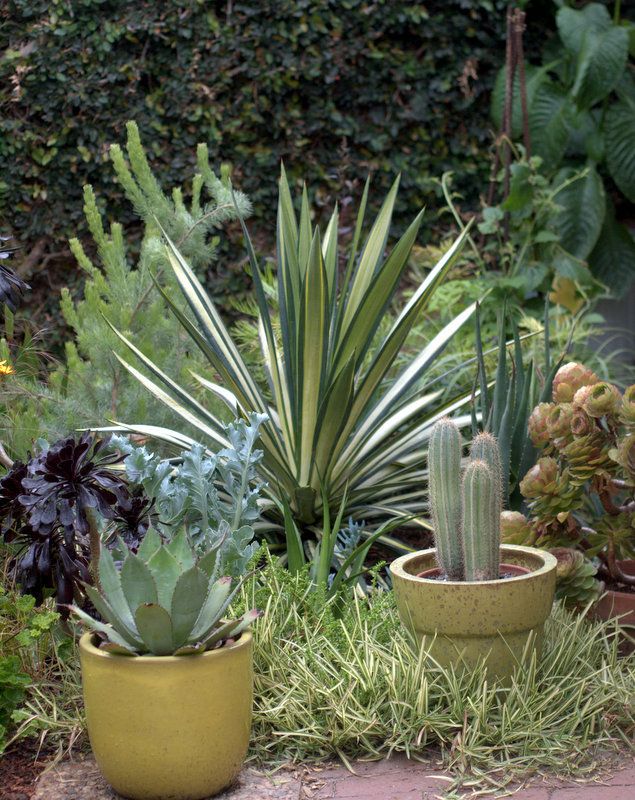
Some sections of the garden don’t change much for summer. There is a young Grevillea ‘Moonlight’ behind the Agave sisalana ‘Variegata’ that should contribute some blooms soon. Agave ‘Mateo’ slowly makes size here too, in front of the A. sisalana, and Aloe ‘Hercules’ was moved here recently, last spikes on the right. Year-round, there should be plenty to hold my interest here, which is key because when the eye gets bored, havoc can ensue, and the compost pile then grows by leaps and bounds. And with the city outside my gate built strictly for commerce, I need the garden as my constant visual stimulator. Which brings us around again to small garden, tough choices.
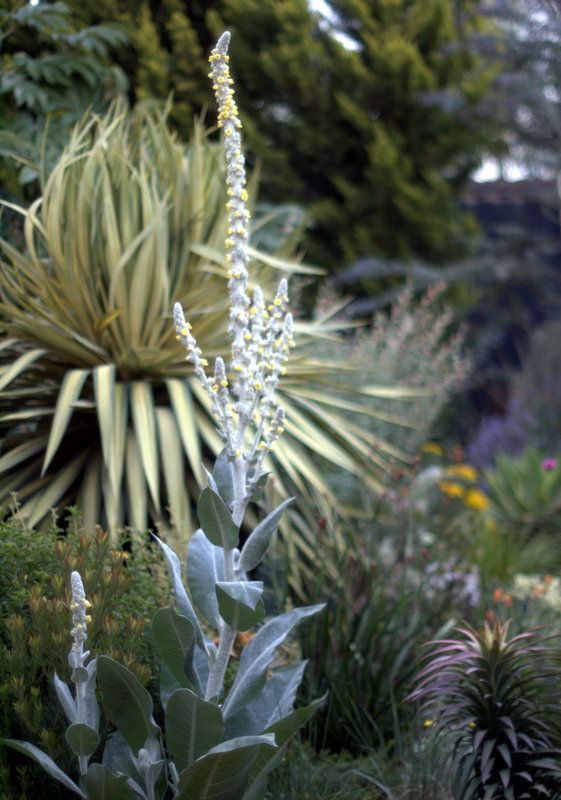
I wish the summer garden was never without the stimulus of Verbascum bombyciferum and that there was space for multiple spires dotted through the garden. Because it’s biennial, there can be gaps and off years while new plants bulk up the first year, flower and set seed in the second, then expire. I just bought another young plant as insurance for next year until the self-sowing cycle reliably kicks in.
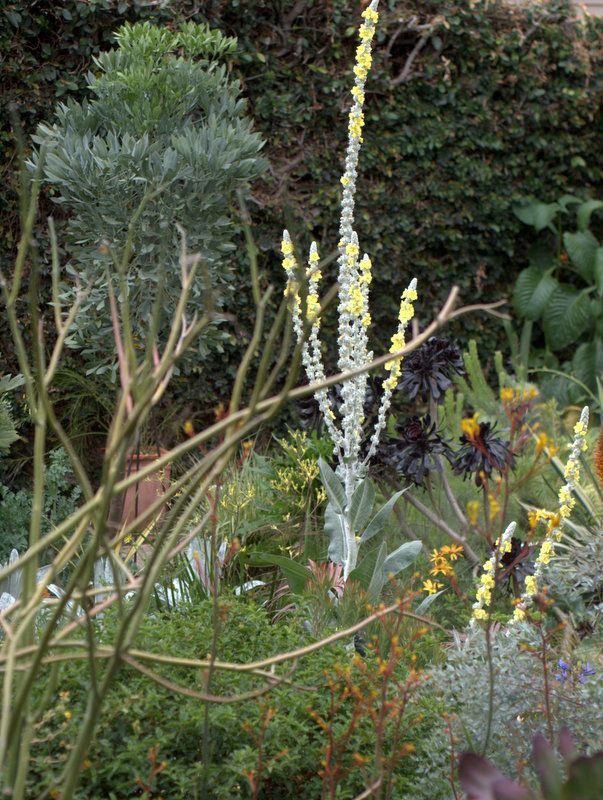
It’s a big plant for a small garden but worth every inch of space you can give it. (Long stems of the photo-bombing slipper plant, Pedilanthus bracteatus, leaning in on the left.)
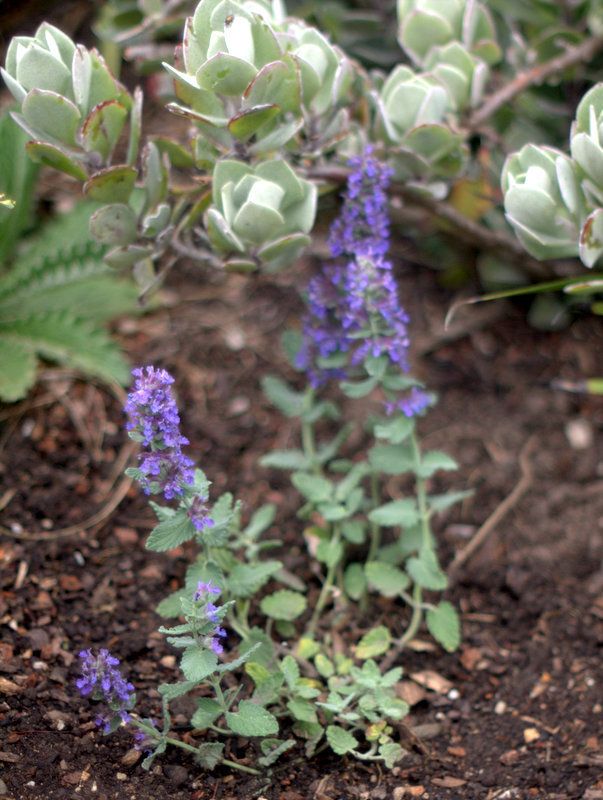
I haven’t stopped trialing intriguing, new, dry garden perennials like this Nepeta ‘Purple Haze’ from Terra Nova, tissue culture of a cross between N. tuberosa and govaniana. Stats say this nepeta with the big bottlebrush flowers will grow low and wide. I had to bat the bees off as I made my selection at a local nursery.
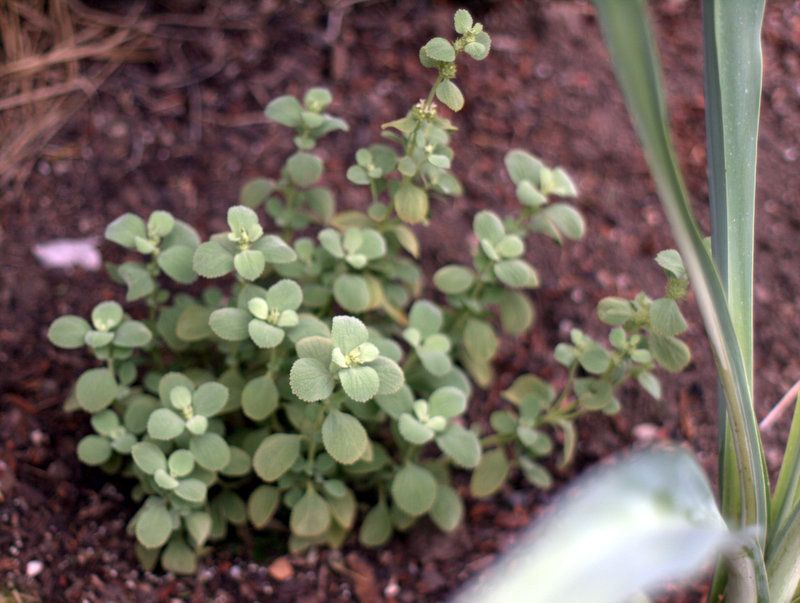
Not new but an old favorite with a new name. What I knew as Ballota ‘All Hallows Green’ is now known as Marrubium bourgaei ‘All Hallows Green.’ So glad to find this again locally. Ballota are great little subshrubs that hold it together all summer and, if used in sufficient numbers, somehow make a disparate group of plants look like a coherent plant community.
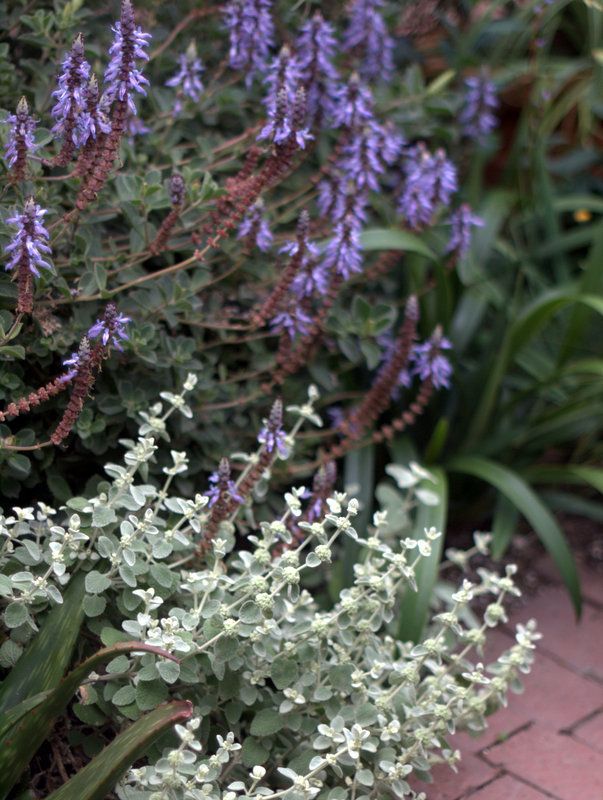
An old standby, Ballota pseudodictamnus, very subtly in bloom at the moment.
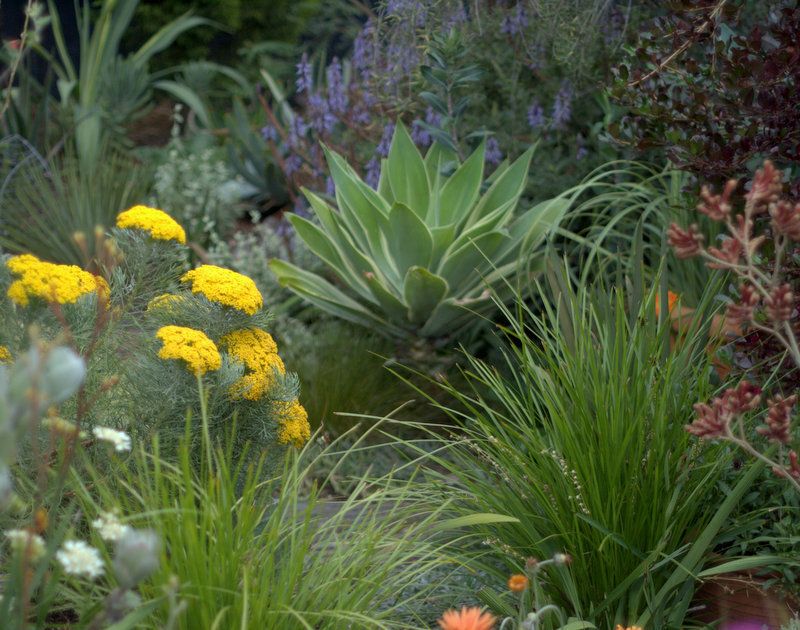
Ever since moving into the house 26 years ago, I’ve been thinking of the next garden, the bigger one, and what I will plant there. The future garden will have agaves, grasses, but rather than accents, as in this garden, there will be scads of them. Grass-like clumps are Lomandra ‘Lime Tuff’ and ‘Breeze.’
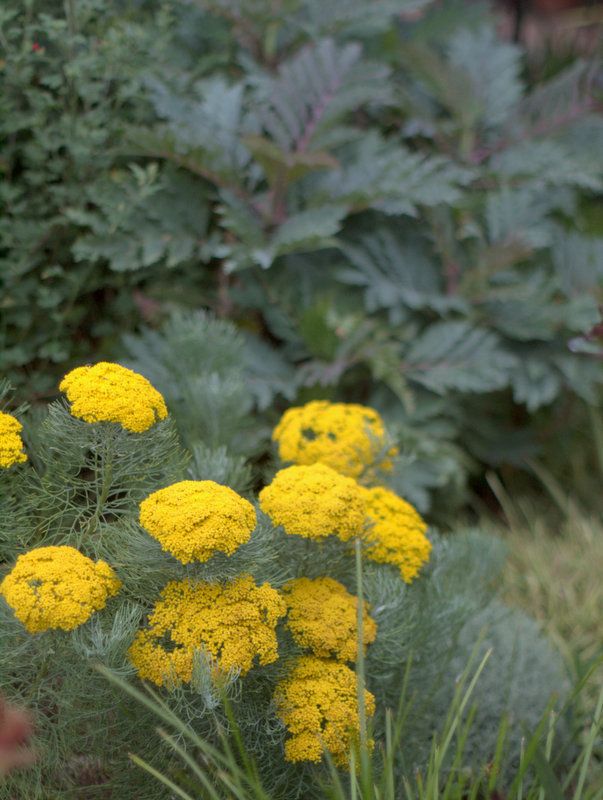
Any future garden would include the Golden Coulter Bush, Hymenolepis parviflora, here backed by the other ‘Purple Haze’ in the garden, the melianthus.
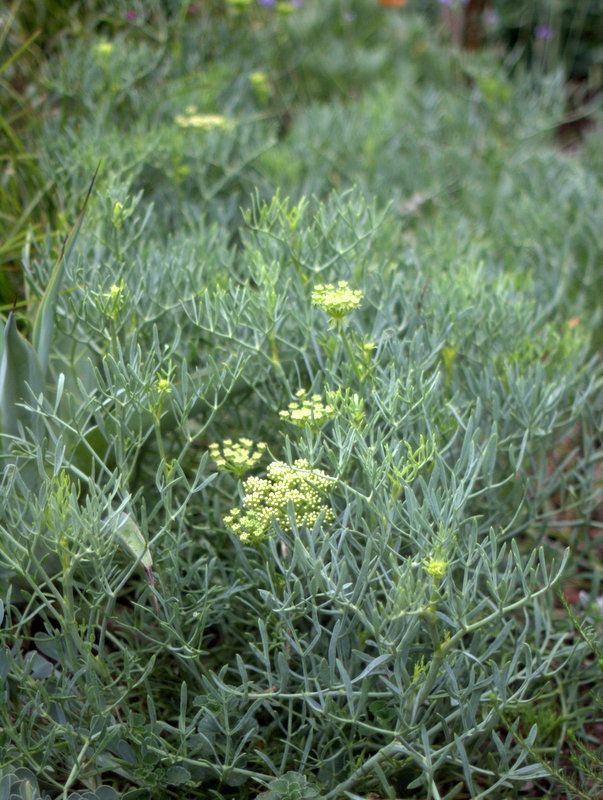
The mythical future garden would also include Crithmum maritimum, a fleshy, almost succulent-like umbellifer with lacy blue-green leaves. Seeds around very lightly to slowly build up sizable clumps. Like ballota, because it has such a long season, it knits together surrounding plants into a community.
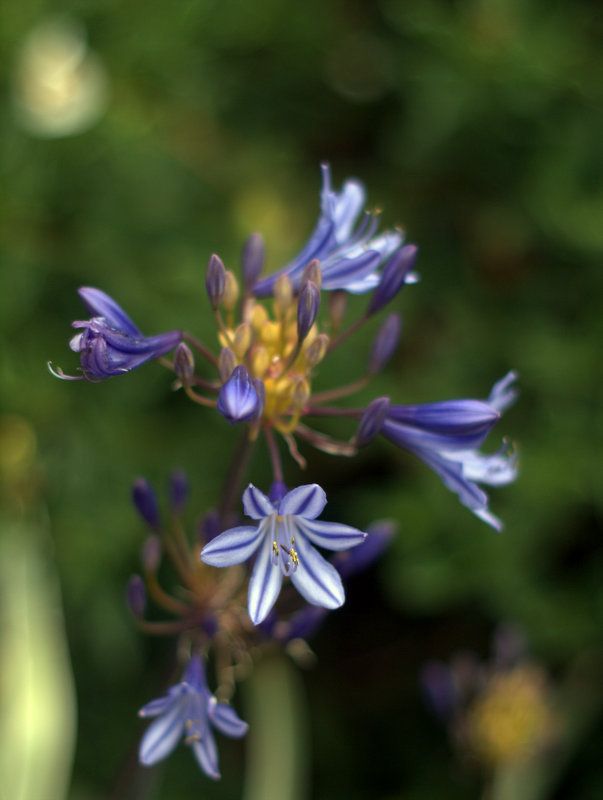
And then there’s the agapanthus experiment this year. Mass plantings are in bloom all over town. It still feels weird to have some in the garden.
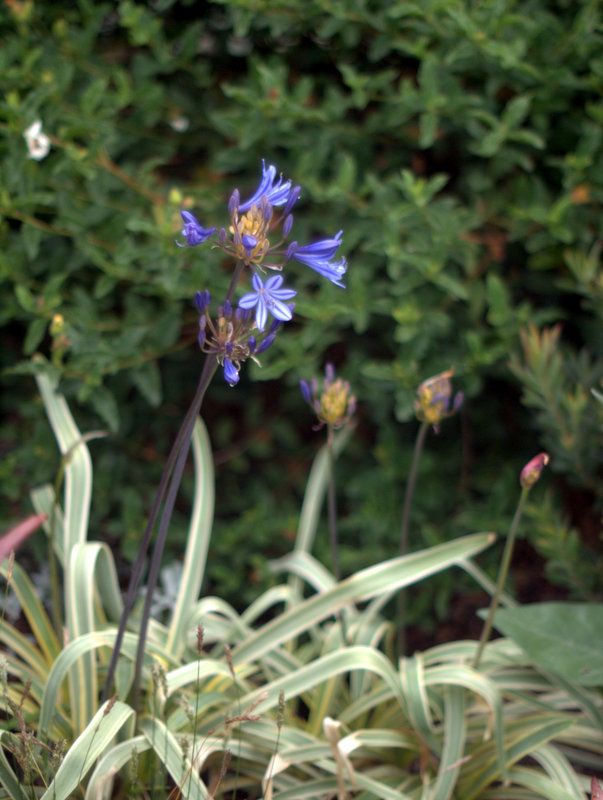
There’s some snobbery here, for sure. If I didn’t see it everywhere, it would be considered a rare treasure, like it is in more cold-challenged gardens. But it’s easy, takes tough conditions, and has nice lines. The bright leaves of ‘Gold Strike’ stand out against the dark green cistus just behind, ‘Snowfire.’

Cistus ‘Snowfire’
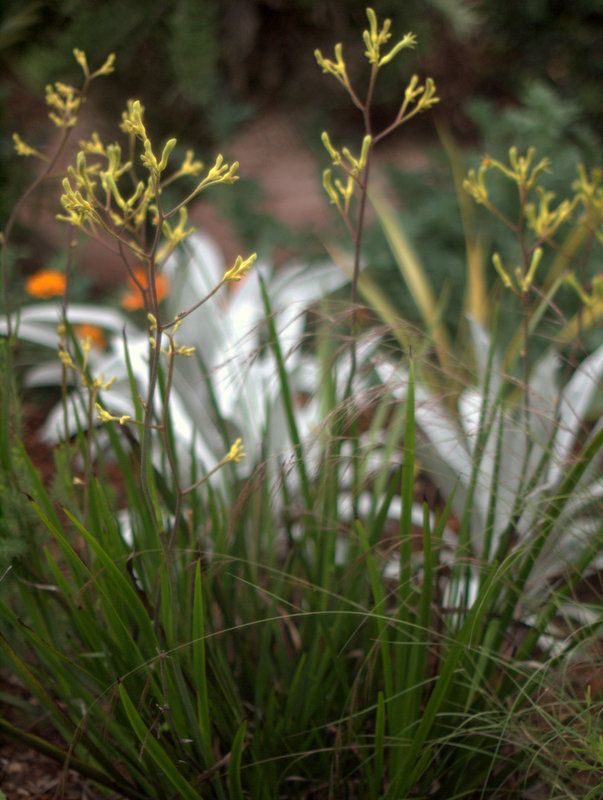
Like agapanthus, I see kangaroo paws all over town, too, which hasn’t turned me against them yet, so it’s obviously the opinion of an inconsistent mind. Just visible in front is a very faint wash of the grass Aristida purpurea in its second year, slow to build up, a well-behaved substitute for Mexican Feather Grass.
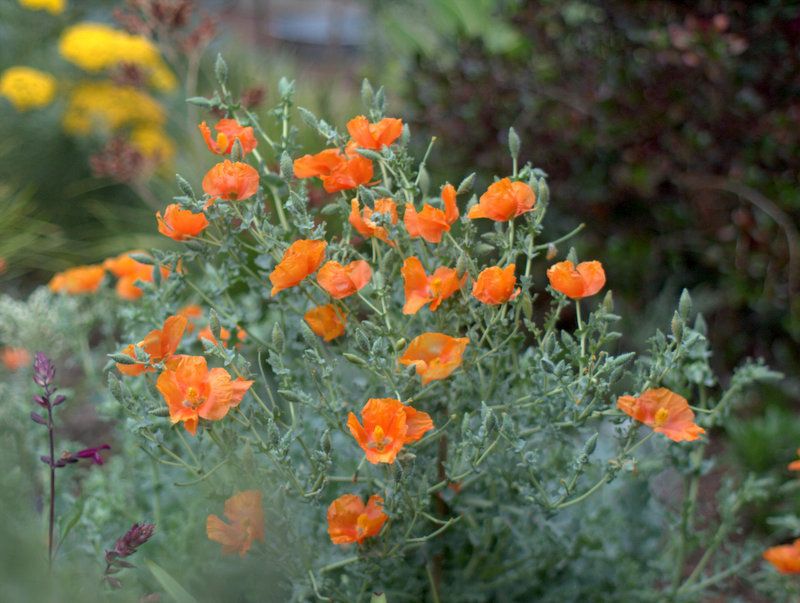
The Glaucium grandiflorum is putting on a huge show this year, and I love having some poppy-like flowers for summer. As a short-lived perennial, it may or may not return next year. Rumor has it that it’s a shy reseeder, so I’d have to bring in new plants.
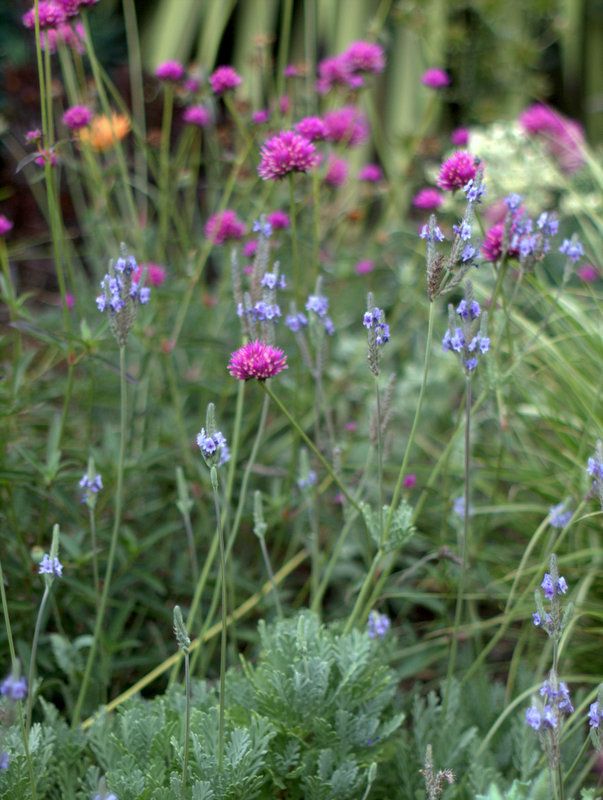
Gomphrena ‘Fireworks’ has been reliably perennial for those of us with severe allium-envy. There’s just not enough winter dormancy for most alliums here. I’m trialing another fern-leaf lavender new to me this year, Lavandula minutoli, so am not sure what to expect, but so far love how the pale flowers seem to glow. It stays low and compact and seems a lot less vigorous in growth than Lavandula multifida, which has inky blue flowers.

Brachysema praemorsum ‘Bronze Butterfly’
So there’s a quick sketch of the method to my madness with just enough time to head out for a picnic. Enjoy your Memorial Day!

Your garden may be small, but you create magical tapestries. Almost every post of yours yields yet another entry on my plant wish list. This time it’s Verbascum bombyciferum, Hymenolepis parviflora and Gomphrena ‘Fireworks’. All of them would look great in my garden. Coincidentally, I just bought Glaucium grandiflorum at Annie’s Annuals; I hope mine will look like yours next year. Stunning!
Have you tried fern-leaf lavender (Lavandula pinnata)? I think it would fit perfectly into your planting scheme. I love its lacy foliage and compact stature. On the downside, it’s not hardy, but ours survived last winter.
Your garden is always interesting and provocative, Denise – whatever choices you make, I hope it will remain so. Despite acquiring a much bigger garden for myself 4 years ago, I still have to fight my collector tendencies. I pulled out several of last year’s has-beens just this weekend to make room for other plants that made my heart leap. Even with the limitations imposed by heatwaves, drought, new water restrictions, and the relentless late-afternoon wind, there are still more plants requiring try-outs on my stage than even I have room for. My goal is to find the perfect mix by the time I’m 80, when I expect I’ll no longer have the stamina for regular updates. In the meantime, I’m eyeing that Brachysema…
Your comment about “…when the eye gets bored, havoc can ensue, and the compost pile then grows by leaps and bounds.” rang true with me, for sure. I was just thinking about how embarrassing it is to review my past blog posts in which I rave over plants that are no longer in the garden. Eerr…really embarrassing. But, I am pretty sure that whatever you do will look great–it always does. I love your photos.
@Gerhard, I have tried pinnata and like it too, all the fern-leaf kinds. I’ve grown the Coulter bush before but let it get too leggy. This one I’m going to prune hard to keep a dense dome. Good luck with your glaucium. Even if it never flowers it’s really something. So many good plants, so little space..
@Kris, I know you’re having so much fun in your new garden. It’s just about the perfect size and you’re filling it with beautiful plants. You know where to find that brachysema — back up to Aus. Native Plants Nursery!
@Emily, so true, and I have been meaning to go back and do a blog review of plants left half mentioned, so to speak!